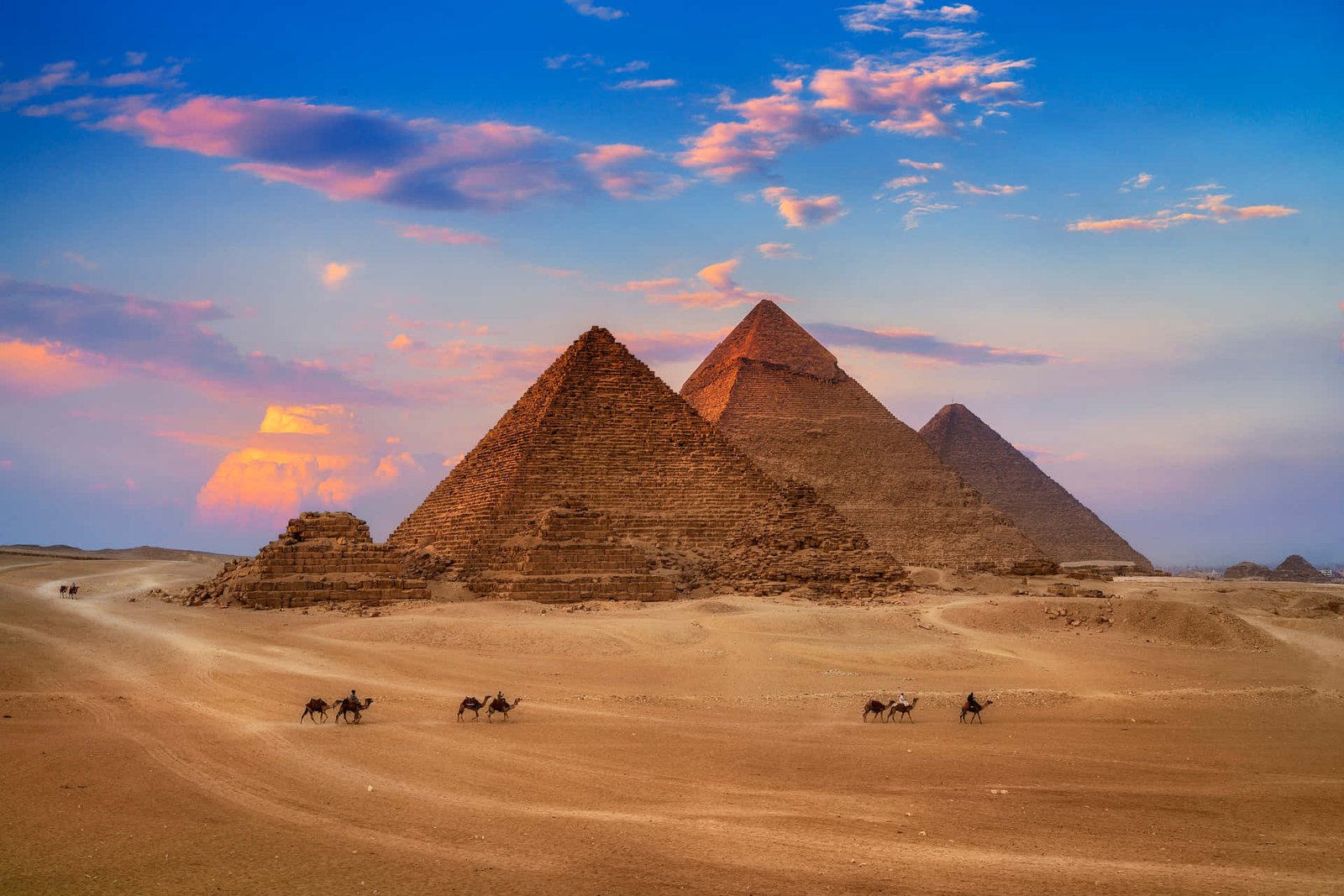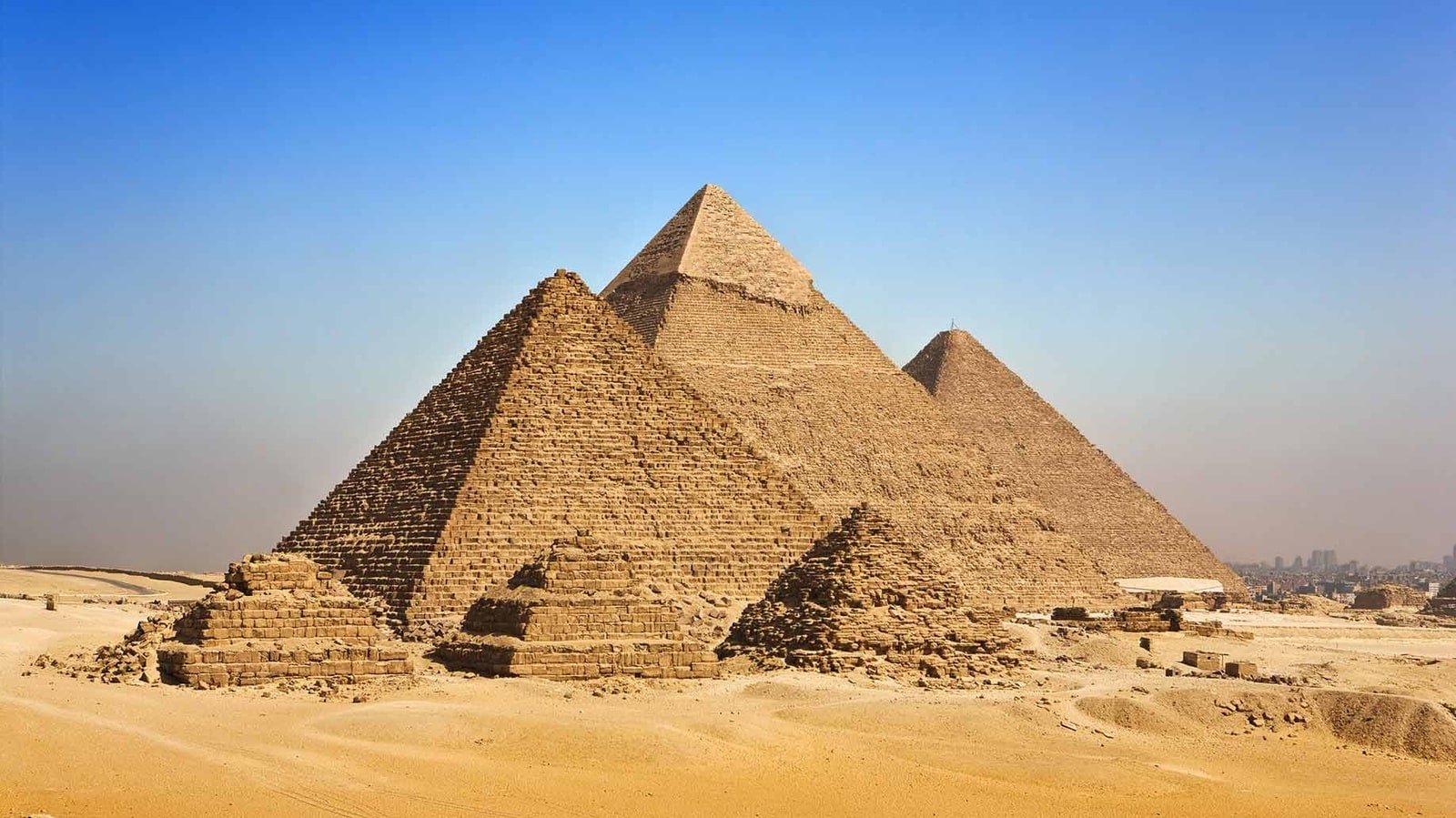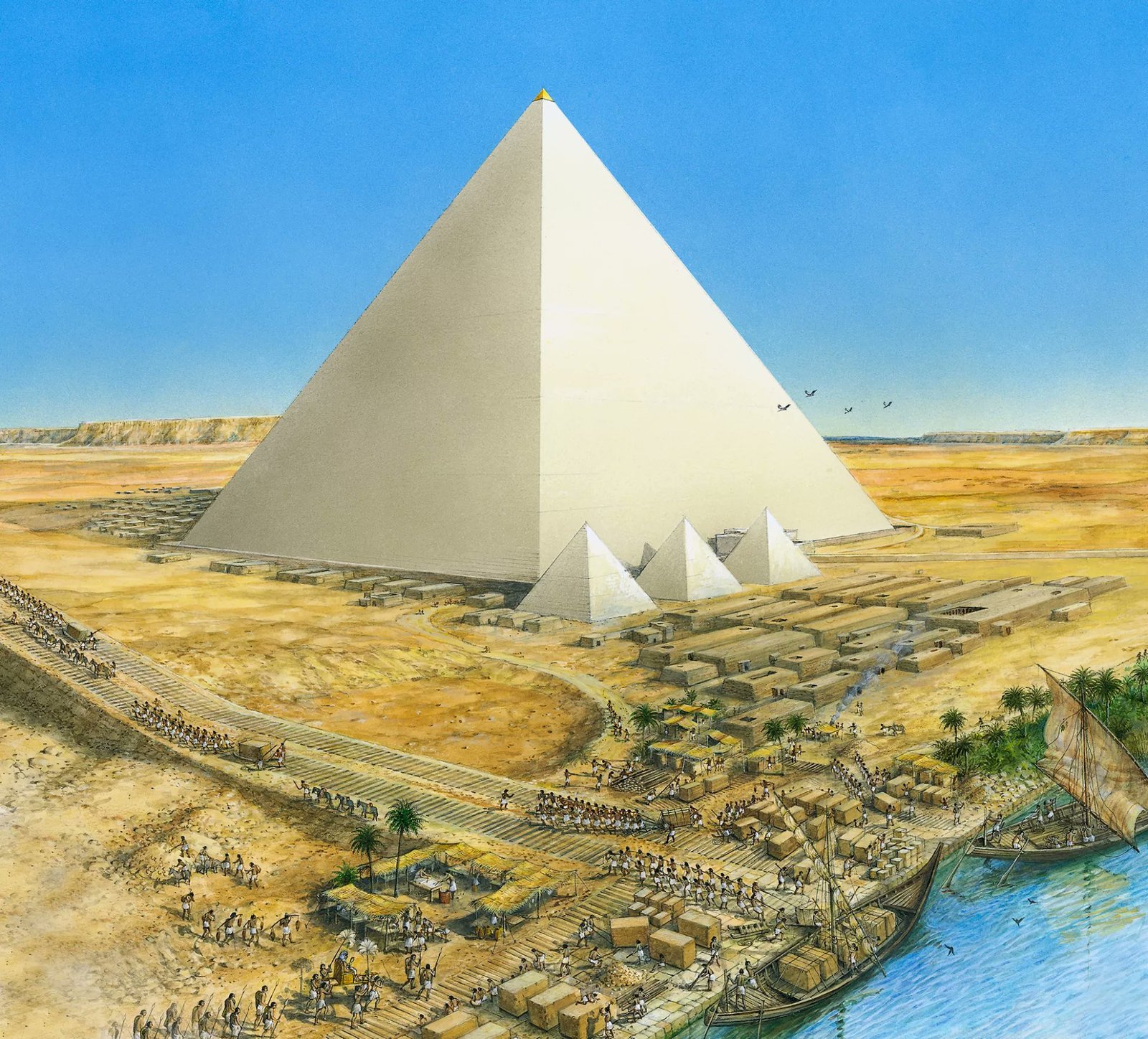Have you contemplated the enigmatic artistry of an ancient civilization of The Great Pyramid of Giza, methodically creating an architectural marvel with such perfect accuracy that it continues to bewilder and captivate our senses today? Let’s go through time and space to ancient Egypt’s splendor—pharaohs’ glorious age. Let’s explore the Great Pyramid of Giza’s labyrinthine beauty.

History of Giza’s Great Pyramid
Ancient Egyptian engineering is displayed at the Great Pyramid of Giza on the Nile’s lush western bank. Pharaoh Khufu’s 26th-century BC Great Pyramid of Giza is impressive. The Great Pyramid of Giza on the west bank of the Nile displays ancient Egyptian engineering—Khufu’s monument.
Architectural Marvel: The Great Pyramid of Giza
-
Design and Construction
Built with over 2 million stone blocks, each weighing an average of 2.5 tons, Giza’s design is an architectural feat. It once stood at the height of the pyramid of Giza 481 feet, though today, it is slightly shorter due to erosion and the absence of the outer casing stones.
-
Interior Complexity
Just as fascinating as its exterior, the Great Pyramid’s interior is a maze of chambers and passages. The main sections include the King’s Chamber, Queen’s Chamber, and the Grand Gallery, each with unique design characteristics.
-
Orion Correlation Theory
A fantastic aspect of the Great Pyramid’s design is the Orion Correlation Theory. It suggests that the pyramid’s positioning mirrors the constellation of Orion, signifying the ancient Egyptian’s advanced understanding of astronomy.
The Builders of The Great Pyramid

-
Pharaoh Khufu
The Great Pyramid of Giza was Commission by Pharaoh Khufu, who wished to have an eternal resting place that reflected his power and divine association.
-
The Map Of The Pyramids Of Giza
Contrary to popular belief, a skilled workforce rather than enslaved people built the pyramid. They were the elite of the time, who worked in rotating shifts around the clock to construct this monumental edifice.
-
Tools and Techniques Used
The workforce used copper chisels, stone mallets, and ropes for construction. The precise alignment of the pyramid with the cardinal points reveals the ancient Egyptians’ advanced understanding of mathematics and astronomy.
The Great Pyramid’s Role in Egyptian Society
-
Religious Significance
The pyramid was more than a pharaoh’s tomb; it was a spiritual symbol. Egyptians believed in the pharaoh’s divine status, and the pyramid served as a staircase to the stars, assisting the pharaoh in his journey to the afterlife.
-
Astronomical Importance
The Great Pyramid also served as an astronomical observatory. The shafts from the King’s Chamber point towards important stars, demonstrating the Egyptians’ deep knowledge of celestial navigation.
The Great Pyramid: Mysteries and Theories
-
Mysterious Chambers and Passages
Numerous hidden chambers and passages remain unexplored, fueling speculations and theories about the pyramid’s true purpose.
-
Speculative Theories
From storing ancient knowledge to being a power plant, various theories surround the Great Pyramid. Although many lack scientific proof, they add to the pyramid’s enduring allure.

Conclusion
The great pyramid of Giza facts attests to the ancients’ unshakable brilliance and profound understanding of the universe. The Great Pyramid never ceases to captivate our senses, maintaining its historical place as a timeless symbol of great human victory inside the great pyramid of Giza.
FAQs (Frequently Asked Questions)
Q: Pray tell, what grand purpose did the Great Pyramid of Giza serve?
A: First and foremost, it served as a wealthy resting place befitting the grandeur of Pharaoh Khufu. However, it transcended mere mortuary purposes, encompassing a realm of divine reverence and celestial significance.
Q: How were the stones of the pyramid moved?
A: Theories suggest that the stones were moved using sleds and ramps.
Q: Are there still unexplored areas within the Great Pyramid?
A: Yes, many hidden chambers and passages remain unexplored.
Q: What is the Orion Correlation Theory?
A: The Orion Correlation Theory suggests that the layout of the three Giza pyramids correlates with the positioning of the stars in the Orion's Belt constellation.








